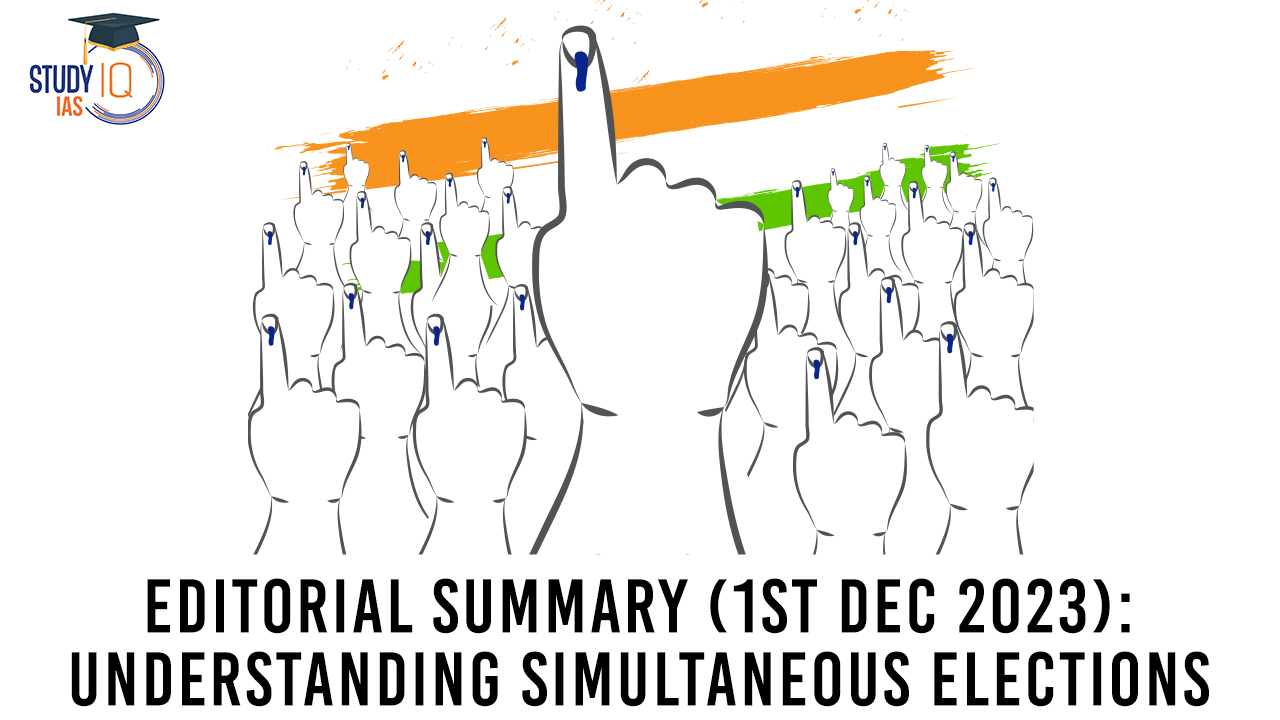Understanding Simultaneous Elections
Context: The Indian government’s recent initiative to explore the feasibility of holding simultaneous elections for the Lok Sabha, State assemblies, and local bodies is a significant undertaking. This effort involves a six-member panel tasked with examining and recommending specific constitutional and legal amendments necessary for implementing simultaneous elections. The panel is also considering whether these amendments would require the assent of half the State assemblies, as stipulated by Article 368 of the Constitution. In October, the panel engaged with the Law Commission to discuss synchronising Parliamentary and Assembly elections by 2029.
We’re now on WhatsApp. Click to Join
Demand for Simultaneous Elections
- Historical Context: Initially, India had simultaneous elections during the first four general elections. This changed due to various political manoeuvres, including advancing Lok Sabha elections by the Congress party in the late 1960s.
- Recent Push: The BJP has been advocating for simultaneous elections since coming to power in 2014, with support from the NITI Aayog and mentions in presidential addresses and Law Commission reports.
Arguments for Simultaneous Elections
- Cost and Resource Efficiency: Simultaneous elections could reduce recurring governmental expenditures and optimise the use of security forces and civilian officials.
- Security and Administrative Strain: Current electoral cycles strain national security and administrative resources.
- Developmental Delays: Separate elections often lead to the halting of development projects and a focus on populist schemes.
- Reduced Role of Money: Simultaneous elections could lessen the influence of money in politics.
- Reducing Divisive Politics: A unified election could shift focus to national issues over regional or communal ones.
- Voter Fatigue: Frequent elections potentially lead to stagnant voter turnout.
Arguments Against Simultaneous Elections
- Federal Concerns: The initiative is seen as potentially undermining federalism, especially without wider consultation with States.
- Marginalisation of Local Issues: Simultaneous elections might push local issues to the periphery.
- Cost of Implementation: The financial and logistical requirements for simultaneous elections are significant.
- Voter Engagement: Frequent elections are seen as keeping voter engagement high and enhancing accountability.
Legal and Constitutional Challenges
- Constitutional Amendments: Implementing simultaneous elections would require amending at least five articles of the Constitution.
- State Legislature Ratification: Amendments would need the support of both Houses of Parliament and at least half of the State Legislatures.
- Complexity with Local Body Elections: Aligning general elections with local body elections adds another layer of complexity due to State-specific laws.
Moving Forward
- Feasibility and Consultation: Given the complexity, the focus might be on clubbing as many Assembly elections with the Lok Sabha elections as possible. This approach would require extensive consultation across political parties and States.
- Judicial Review and Center-State Relations: Any amendment acts will likely face judicial review, emphasising the importance of centre-state relations in this process.


 Operation Baam: Baloch Separatist Group ...
Operation Baam: Baloch Separatist Group ...
 National Register of Indian Citizens (NR...
National Register of Indian Citizens (NR...
 World Population Day 2025, Themes, Histo...
World Population Day 2025, Themes, Histo...





















